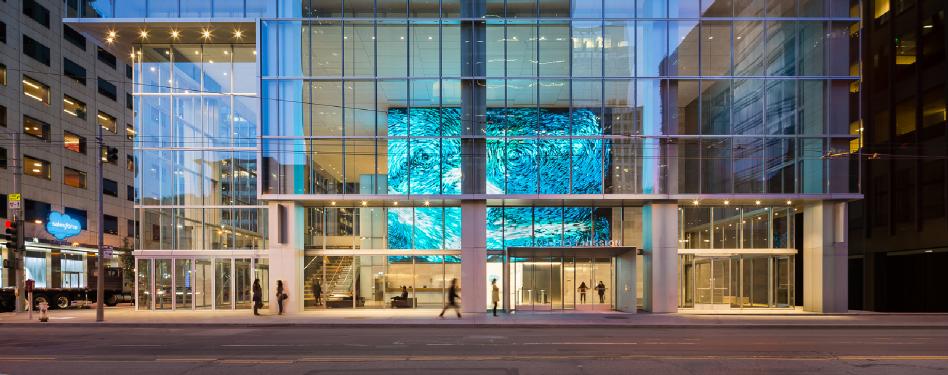
Tackling the waste footprint of commercial offices can seem daunting, but it shouldn’t. Kilroy Realty Corporation’s 350 Mission building in San Francisco is a testament to the achievability of zero waste for office buildings.
With a diversion rate of 91.9 percent, the 350 Mission building recently became the first commercial high-rise building in the world to be certified by TRUE Zero Waste. The office earned TRUE Gold, with a total of 49 points.
There isn’t a one-size-fits-all way to reach a zero waste goal, but there are many similarities among buildings that do. These five strategies can help any office building pursue zero waste.
1. Be open to change and embrace innovative ideas.
People often would rather stay in their comfort zones, even if they know change is the right thing to do. Fortunately, the changes that most office buildings need can be fairly painless to make!
A great example is switching to reusable cups and mugs at the office. This is a typical change made at home, yet far too many offices consider disposable cups and serviceware to be their norm. Switching is one of the easiest ways to decrease waste and reduce costs.
At 350 Mission, there are reusables in place for drinks, food and snacks, so that container waste is avoided. This simple change has led to reducing waste by more than 60,000 pounds per year, about as much weight as 15 cars.

The 350 Mission Building. Photo credit: Kilroy Realty.
2. Find financial incentives.
When trying to do the right thing is cost-effective, it can really help get leaders on board. Zero waste practices involve improving material flow and eliminating inefficient aspects of our linear economy. To put it simply, wasting less means paying less—you don't have to get materials hauled offsite or spend to buy those materials again.
Having a quality relationship with your waste hauler is an important component of finding a financial incentive. Ideally, they can collect at least three waste streams (landfill, recycling and compost) and provide incentives for recycling and composting.
In San Francisco, where Recology is the hauler, they offer a discount for diversion rates over 25 percent. While this situation can vary around the country, many people don’t even start the conversation. Investigate, and push for change!
3. Engage stakeholders.
Getting everyone to start working together is what keeps the zero waste movement going. For example, putting zero waste policies in place means very little if the infrastructure isn’t also there, and even having the infrastructure doesn’t necessarily mean that building occupants will use it properly.
Engaging all of the stakeholders in the building is crucial. In a typical office building, this would include the property managers, the janitorial team, the waste hauler and the building occupants (everyone matters, from executives to entry-level employees).

The 350 Mission Building. Photo credit: Kilroy Realty.
4. Emphasize data and accountability.
In this day and age, data is king. Measuring what matters is crucial to every modern industry and encourages continuous improvement. However, the other aspect of collecting all of this data and analyzing it is accountability.
Waste hauling data like costs, frequencies, volumes, and so on are important when looking at the waste impacts and costs associated with zero waste. In addition, a third-party waste audit can provide data on diversion numbers, material types generated and contamination levels, and can help discover where the waste is being generated.
Accountability means acknowledging where there is room for improvement and what actions (maybe even yours) led to that outcome. Data helps provide direction and action items, and accountability helps make effective and necessary changes.
5. Have a champion or catalyst.
Leader. Champion. Catalyst. A person or team needs to be the driving force behind the zero waste initiative and certification. That person is the one knocking on doors, exploring new solutions and pushing stakeholders toward the goal.
At 350 Mission, the catalyst for certification was when the building brought in All About Waste as their zero waste consultants. The team worked closely with Kilroy to perform a waste analysis. The certification would not have been possible without the support of consultants who worked with the building management team, Kilroy’s sustainability team, the building tenant, the waste hauler Recology and the janitorial team from ABM.
TRUE-certified buildings are ahead of the curve. Anticipate, plan ahead and take action to demonstrate awareness and resilience while also cutting costs and increasing efficiency. TRUE buildings support a culture of leadership and innovation, where people work together to help create not only zero waste buildings, but zero waste communities.
Learn more zero waste strategies
Denise Braun is a TRUE Advisor, LEED AP and WELL AP. She is the founder and principal of All About Waste, the Zero Waste Consultants for Kilroy Realty Corporation and the 350 Mission building in San Francisco.
